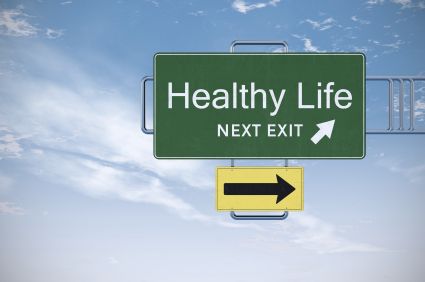Carbohydrate Sources

The Nutrition of Carbohydrate Sources
Sugars, starches and fibers are the three types of the organic compounds we call carbohydrates. Another way of saying this is that we have simple carbohydrates (sugars) and complex carbohydrates (starches and fibers).
Sugars can be monosaccharides (“one sugar”) or, when they are composed of two monosaccharides, they are called disaccharides (“two sugars”). Starches are polysaccharides(“many sugars”) and are composed of long chains of monosaccharides.
The Simple "-oses" in carbohydrate sources
The most common monosaccharides are glucose, fructose and galactose, and the most common disaccharides are maltose (alcohol sugar), sucrose (table sugar) and lactose (milk sugar).
Of all of these sugars, glucose is the most important, because it is fuel for the brain and, when the body stores it as glycogen, fuel for the muscles. You may hear glucose referred to as “blood sugar” because it circulates in the blood supplying energy to the brain and fuel to your muscles.
The Complex carbohydrate sources
The complex carbohydrates (polysaccharides) are starches and fibers. Starches are stored by the plants that we eat, and so, come almost exclusively from plant foods. Fibers make up the structures of plants and are classified as soluble fiber and insoluble fiber. Both types of fiber are essential to a healthy eating lifestyle.
Glycemic Index
There is another carb issue that has become popular in recent times. This is something called the Glycemic Index. This is a way of defining foods in terms of how fast the sugar from carbohydrates gets into your bloodstream. This may be important both in weight loss and control of diabetes, because of its affect on insulin, the hormone produced by your pancreas that allows the glucose to enter the cells and provide energy. Generally, the simpler the carb, the more quickly it is broken down and becomes glucose in your bloodstream.
Fun Fact for Carbohydrate Sources: Your body can convert polysaccharides to glucose through the process of digestion. If you hold a piece of bread or cracker in your mouth, it will start to taste sweet as the saliva begins to breakdown the complex starch and make it into simple sugar.
What you need to know about carbohydrate sources
Carbohydrates have gotten a bad name in recent years, but, without them, you will not feel well. You need them for energy, and good quality carbohydrate foods contain many of the other nutrients, such as vitamins, minerals and fiber that are part of a healthy diet.
Carbohydrate foods are mostly the plant foods that you eat. There are the healthy carbs, such as
-Foods from whole grains: Breads… Rolls… Pasta… Cereal… Bagels… Rice…
-Fruits: Apples… Oranges… Pears… Bananas… Grapes… Berries… Peaches… Watermelon… Pineapple… Kiwi… Grapefruit…
-Vegetables: Lettuce… Broccoli… Carrots… Potatoes… Peas… Corn… Onions… Beans… Spinach… Squash…
There are less healthy (some would say un-healthy) choices, such as
-Doughnuts... French fries… Pies... Chips… Cakes… Cookies… Products made from all white flour.
It's important that you choose most of your foods from the first list rather than the second. In addition to being poor carbohydrate foods, the foods in the second list are loaded with fat, particularly saturated fat and trans-fats, which have been implicated in the rise of heart disease and cancer.
Starchy and not so starchy carbohydrate sources
Within the vegetable group, a distinction can also be made between those with a significant amount of carbs, and those with not much carbohydrates at all.
-Starchy vegetables: Carrots, Potatoes, Winter Squash, Corn, Peas, and Sweet Potatoes
-Less-starchy vegetables: Broccoli, Lettuce, Spinach, Green Beans, Peppers, and Summer Squash
Although both groups offer good nutrition, if weight loss is an issue for you, choose vegetables from the less starchy group more often than from the starchy group.
Protein and Carbohydrates in the same foods
Certain plant foods that are carb foods, also supply a significant amount of protein.
Lentils… Split peas… Kidney beans… Pinto beans… Black beans… Soybeans… Garbanzo beans… Navy beans… Peanuts… Peanut Butter… Rice… Wheat…. Barley… Oats… Peas…
When you eat these foods, you will enjoy the advantages of both a good source of carbohydrates and also a significant source of protein. Most of them also have the added benefit of being high in fiber.
Conversely, although most carbohydrates come from plants, one animal product, dairy, contains the carbohydrate lactose. There also is some carbohydrate found in liver, but it is not considered a significant source.
Fun Fact for Carbohydrate Sources: There are carbs in liver, because the liver is where glycogen (storage form of the simple carb, glucose) is kept as an extra fuel supply and ready to be converted to glucose, when needed.
How much is enough?
There is a great deal of discussion about how much carbohydrate is needed in the diet. Since carbs encompass the Bread, Cereal, Rice and Pasta Group, as well as the Fruit and Vegetable Group, and even shares some foods with the Protein group, it is difficult to make an across-the-board recommendation for carbohydrates. Most health experts agree that you should be eating more of your calories (some say as much as 55-60%) from carbohydrates than from the Protein and Fats groups.
This would mean that if you eat 2500 calories a day, 1375-1500 of them should come from carbohydrates.
2500 calories x 55-60% = 1375-1500 calories.
40%-30%-30%
Another way that some nutritionists look at carbohydrate consumption is the 40%-30%-30% rule. This says that you should get 40% of your calories from Carbohydrates, 30% from Protein and 30% from Fats. These percentages vary somewhat, depending on the source, but the idea generally is to eat a balance of the three with a slightly higher percentage from theCarbohydrates category.
This would mean that if you eat 2500 calories a day, about 1,000 of them should come from carbohydrates.
2500 calories x 40% = 1,000 calories
The problem with these approaches is that they do not take into account the quality of the carbs you are choosing. If you are eating 1,000 or 1500 calories of bread each day, you are meeting the requirement, but missing out on the benefits of the other types of healthy carbohydrates.
For example, healthy carbs are a source of fiber that you need to feel good and stay healthy. It is recommended that you get 25-30 grams of fiber each day. Processed carbs generally contain very little fiber.
Note: Some healthy eating experts recommend variations in the percentages, depending on the the way they look at nutrition. For instance, some prefer a lower percentage of fat in the diet, so they may suggest a ration of 50%-30%20%.
You will need to decide what works best for you. The important thing is that you are choosing healthy versions from each of these macro-nutrient food categories, i.e. healthy carbs, healthy protein, and healthy fats!
Getting to heart of the issue of carbohydrate sources
I know you don't much like counting calories! You want to enjoy your food, not analyze it, and you definitely don’t want to think of it only in terms of percentage of daily requirements. In addition, many of the foods you eat do not fall into only one category.
Chances are, if you live in a developed nation like the U.S., you are probably getting plenty of carbohydrates in your diet. Even in less developed countries, carbohydrates are generally more common in the food supply than protein.
The best carbs
The big concern with carbohydrates is not whether we are getting enough, but rather, which carbs are we eating. Are you eating white flour products and missing out on the benefits of whole grain foods? Are you eating a lot of bread and skipping vegetables and fruits? Do you concentrate on starchy vegetables, such as potatoes, and say no to broccoli and dark leafy greens? Do you go for deep-fried vegetables rather than eating them lightly cooked or raw?
Chances are you are getting enough carbs, but are they the best kind?
Fun Fact for Carbohydrate Sources: The pigments in colorful carbs--deep greens, dark oranges, bright yellows, deep purples, and vivid reds--seem to provide some protection to your body from oxidative stress. Take advantage of this rainbow brigade by choosing fruits and vegetables that are colorful. (Orange frosting on your cupcake doesn’t count!)
Eat whole foods
The other thing to remember is that the recommended servings are based on choosing more whole grains and unprocessed foods--whole wheat bread over white bread, baked potato over French fries, and fresh fruit over sweetened, canned fruit, for instance.
Why do I need to find carbohydrate sources?
Considering the bad rap that carbs have gotten in recent years, you may well ask, why do I need them? Due to the popularity of the low-carb diets, many people think of carbs as fattening and to be avoided as much as possible. If that’s how you feel, you may want to change your thinking. It bears repeating. You can be healthy eating carbohydrates!
In addition to providing your body with fuel—glucose for brain function and muscle activity—carbohydrate foods contain vitamins, minerals and fiber, along with other protective phytochemicals, the value of which we have only just begun to appreciate. A carbohydrate-rich diet, especially where whole grains, fruits and vegetables are emphasized, may protect you from heart disease, diabetes, and some types of cancer. In addition, the fiber in many carb foods will contribute to a healthy colon and decreased exposure to harmful toxins.
What if I don’t get enough?
The question of enough carbs should probably be about enough of the right carbs. If you don’t eat enough good carbs, you will not get the vitamins, minerals, phytochemicals and fiber that carbohydrate foods provide. Even if you take supplements, there are trace chemicals and other substances that will not be in the pill you take.
Too many ketones
If you have made the choice to try a low-carb diet, and the carbohydrate content in your diet are too low in favor of fat and protein, you will experience something called ketosis, which upsets the acid-base balance in your body and can cause nausea, fatigue, weakness and bad breath! In addition, if your body does not get enough carbohydrates for energy, it may resort to breaking down (in fact, digesting) your muscles.
Are there poor carbohydrate sources? There is some very good scientific evidence that too many of the wrong carbs, simple sugars and refined starches, can lead to cavities, insulin resistance and even malnutrition.
Too little fiber
If you do not eat enough fiber-containing carbohydrate foods, you may experience constipation and hemorrhoids, and could increase your risk of getting colon cancer and other digestive disorders.
What happens if I eat too many carbohydrate sources?
What happens if you eat too many carbs? You will get fat! Unfortunately, if you eat too much of anything, with the possible exception of lettuce, you will gain weight. In the case of carbohydrates, they are an energy food, so they have calories, some more than others, and you know which ones those are. Energy, if the body does not use it up, is turned into fat and stored (on your hips, thighs, belly or around your heart!).
Too much fiber in the diet can lead to gastrointestinal distress and can limit the absorption of important nutrients.
Caveat for Carbohydrate Sources: It is generally when a person is eating too many high fat and high sugar foods that carbohydrates become a problem for them.
Remember this
If you want to eat healthy, be sure to pick carbohydrates from a variety of sources. Concentrate on whole grains and colorful fruits and vegetables. Be aware of your portions, especially of the starchy carbs.
Just for fun, be adventurous and try out some new carb foods.

